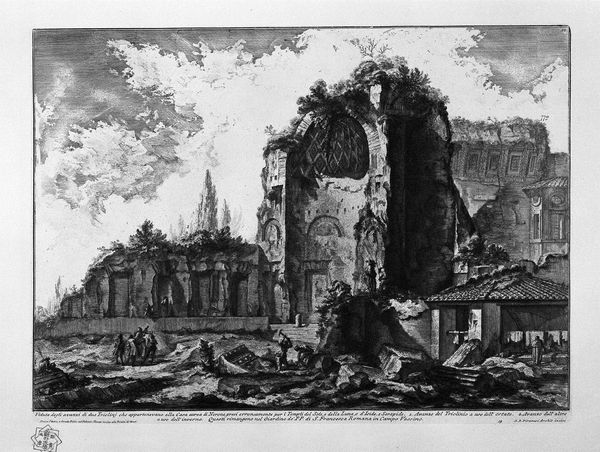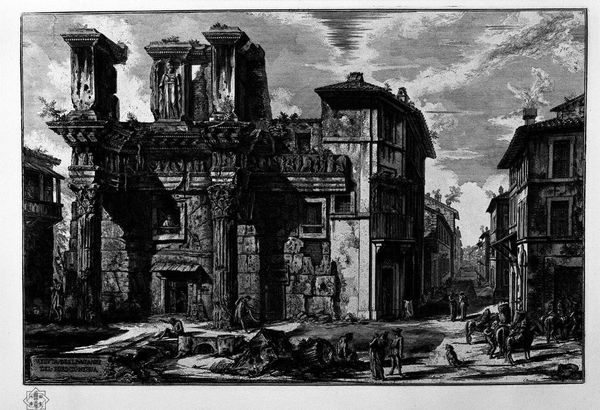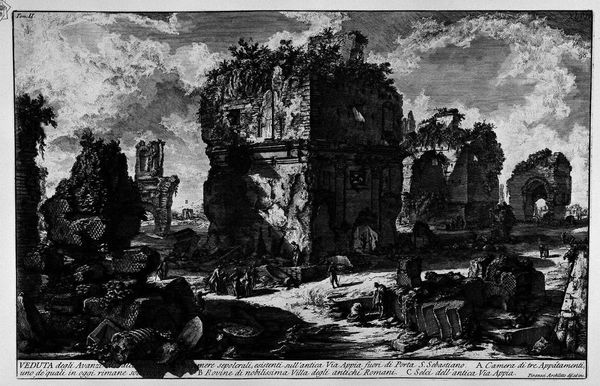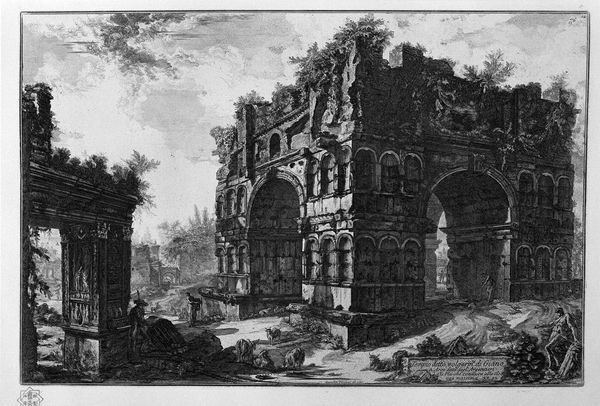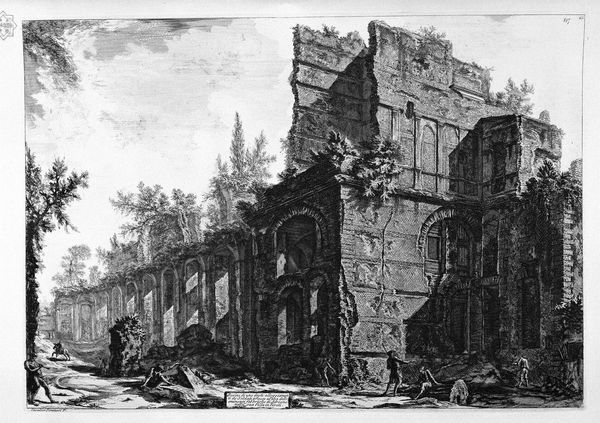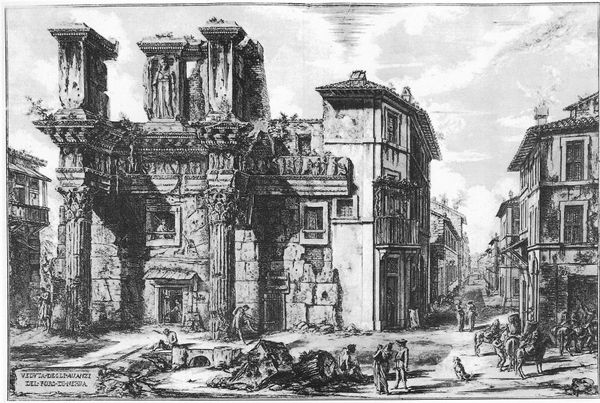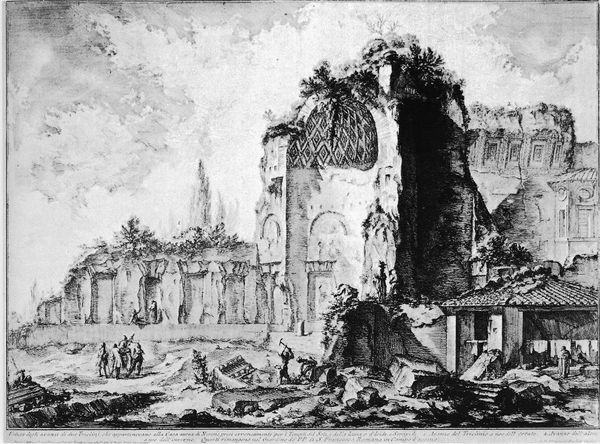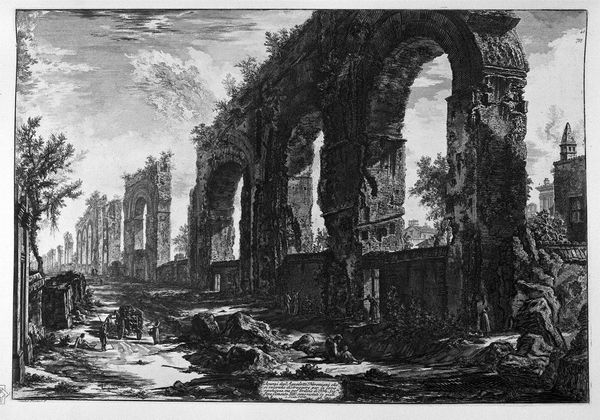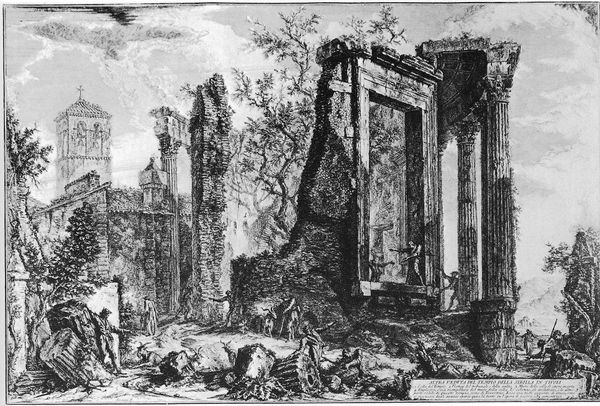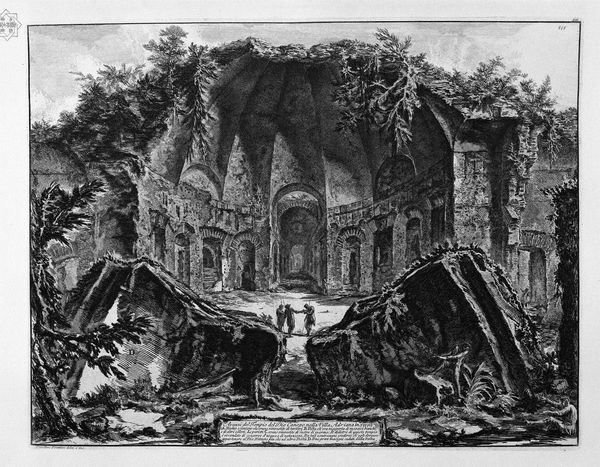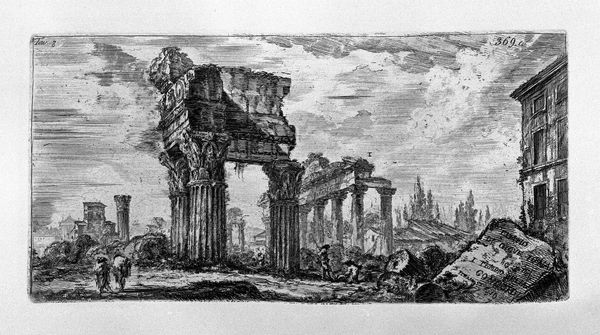
View the remains of factories on the second floor of the Baths of Titus
0:00
0:00
print, etching
# print
#
etching
#
landscape
#
perspective
#
romanesque
#
history-painting
Copyright: Public domain
Curator: Piranesi’s etching, titled “View the remains of factories on the second floor of the Baths of Titus," really captures a melancholic atmosphere. What’s your initial impression? Editor: Stark. The remnants of these structures evoke such a palpable sense of history. But it's the material decay—the erosion of the stone, the vegetation reclaiming what was once built—that I find most arresting. What story do you see in the formal arrangement? Curator: Structurally, it is all about the power of perspective. Piranesi uses exaggerated depth to create a sense of the sublime, highlighting the contrast between the grandeur of the ruins and the small figures wandering amongst them. This juxtaposition amplifies the overwhelming scale of history, doesn’t it? Editor: Absolutely, but I see that relationship between the workers and the scale of the structures somewhat differently. Looking at the foreground rubble and the way nature intertwines with these remnants of past labor, I am struck by questions. What raw materials went into its making? How were they transported, who were the laborers? These structures tell tales of extraction, human toil, and the transformation of resources. Curator: An interesting reading. I am still drawn to the architectural articulation itself. Consider the artist’s rendering of light and shadow – the chiaroscuro, that emphasizes the solidity of forms, their geometry, against the more amorphous natural elements. This creates tension, but also unity in the composition. Editor: Precisely. This complex, layered process, going from the original quarried materials to the Roman architecture, transformed again into manufacturing sites, only to return to a state of natural decomposition, shows so many cycles of repurposing. It urges me to reflect on human innovation, social structure, and our impact on the world we live in. Curator: Your view invites an entirely new reading for me. Ultimately, Piranesi captures the power of architecture as an articulation of civilization in dialogue with inevitable decline. Editor: And for me, it becomes a mirror to reflect upon not just grand structures, but the intricate details of human endeavor and the world around us.
Comments
No comments
Be the first to comment and join the conversation on the ultimate creative platform.
